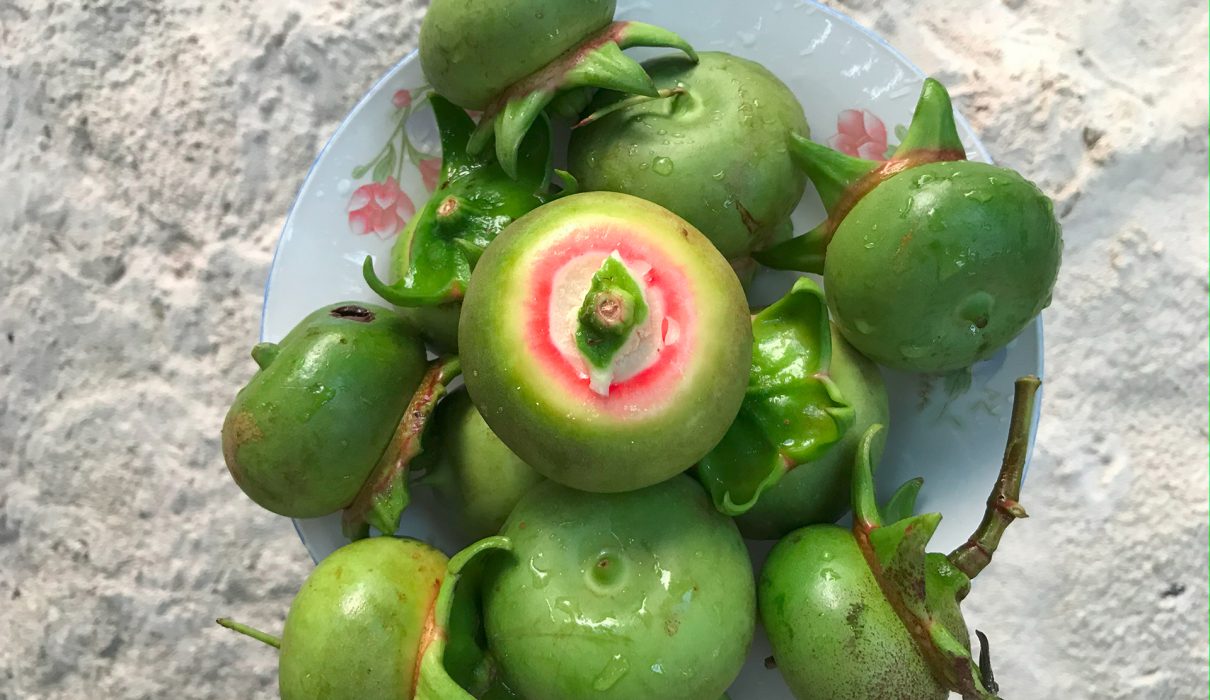Sonneratia caseolaris, commonly known as the mangrove apple, belongs to the genus Sonneratia, which consists of nine distinct species, including seven primary species and two hybrids. This species is globally recognized for its ecological significance and unique fruit.
Distribution and Habitat in the Maldives
In the Maldives, Sonneratia caseolaris is the predominant species, deeply integrated into the coastal ecosystem. Small saplings emerge from the water and gradually grow into towering trees that enhance the coastal landscape and play a crucial role in preventing soil erosion. The highest concentration of these trees is found in Noonu Landhoo. During my childhood in Noonu Lhohi, I remember observing just three of these trees. However, after 2012, new trees were discovered, and over the years, they have grown significantly. This species is also present in other locations, including Noonu Maalhendhoo, Manadhoo, Tholhendhoo, Kendhikolhudhoo, Shaviyani Foakaidhoo, Maakandoodhoo, Shaviyani Goidhoo, and some islands in Haa Alifu and Haa Dhaalu. Additional places include HDh Kumundhoo, Keylakunu, Vaikaradhoo, and Kaafu Kaashidhoo, Fuvahmulah City as well as various other islands, though in varying numbers.
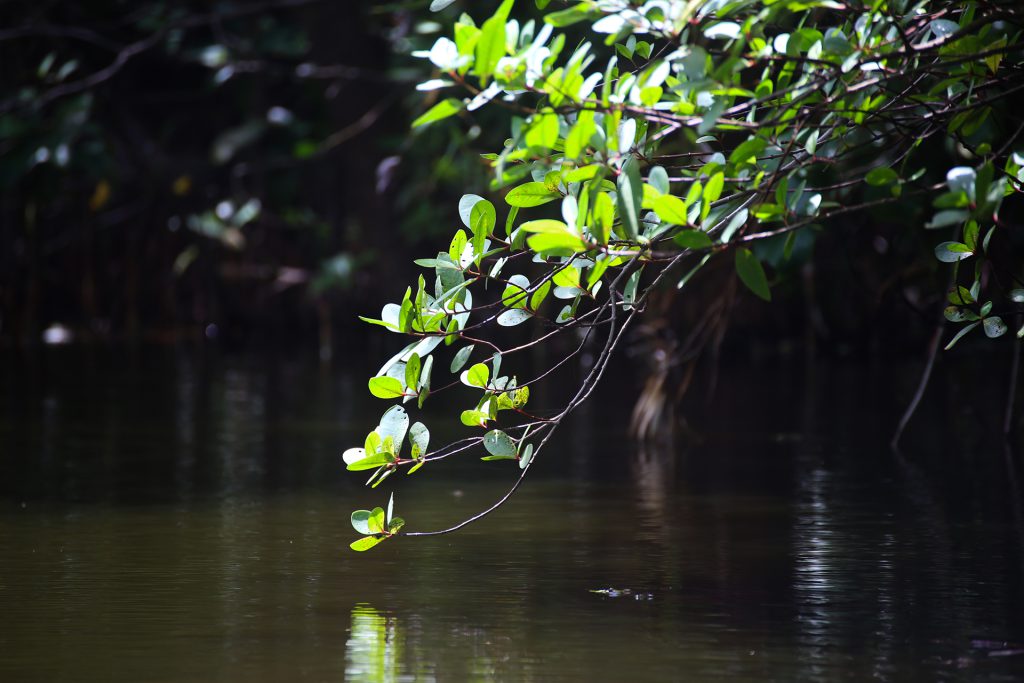
Scientific Classification
- Kingdom: Plantae
- Clade: Tracheophytes, Angiosperms, Eudicots, Rosids
- Order: Myrtales
- Family: Lythraceae
- Genus: Sonneratia
- Species: S. caseolaris
- Binomial Name: Sonneratia caseolaris (L.) Engl.
- Conservation Status: Least Concern (IUCN 3.1)
Physical Description
The mangrove apple is a small fruit, typically 5-8 cm in diameter, with an ovate to slightly flattened shape. The green, leathery skin encases dense, cream-colored flesh with an aqueous texture and small ivory seeds. Its distinctive sour, tangy taste has subtle cheese-like notes and berry undertones, making it suitable for diverse culinary applications. The mangrove apple tree can reach heights of up to 20 meters and produces vibrant ruby-red flowers that bloom for just a single night, attracting nocturnal pollinators such as bats, moths, and fireflies.
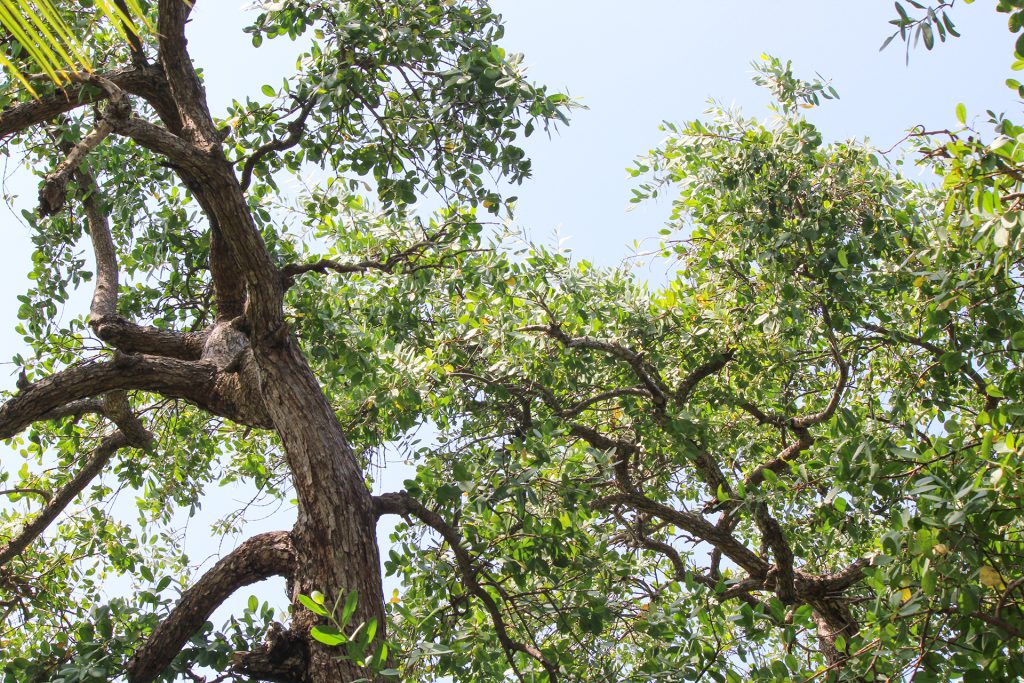
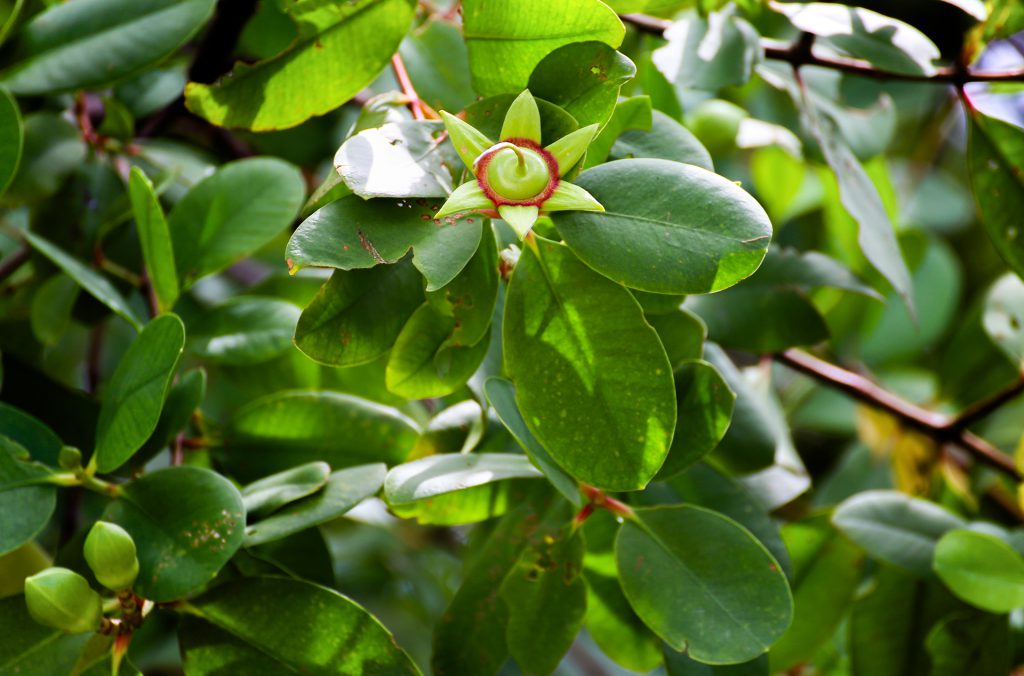
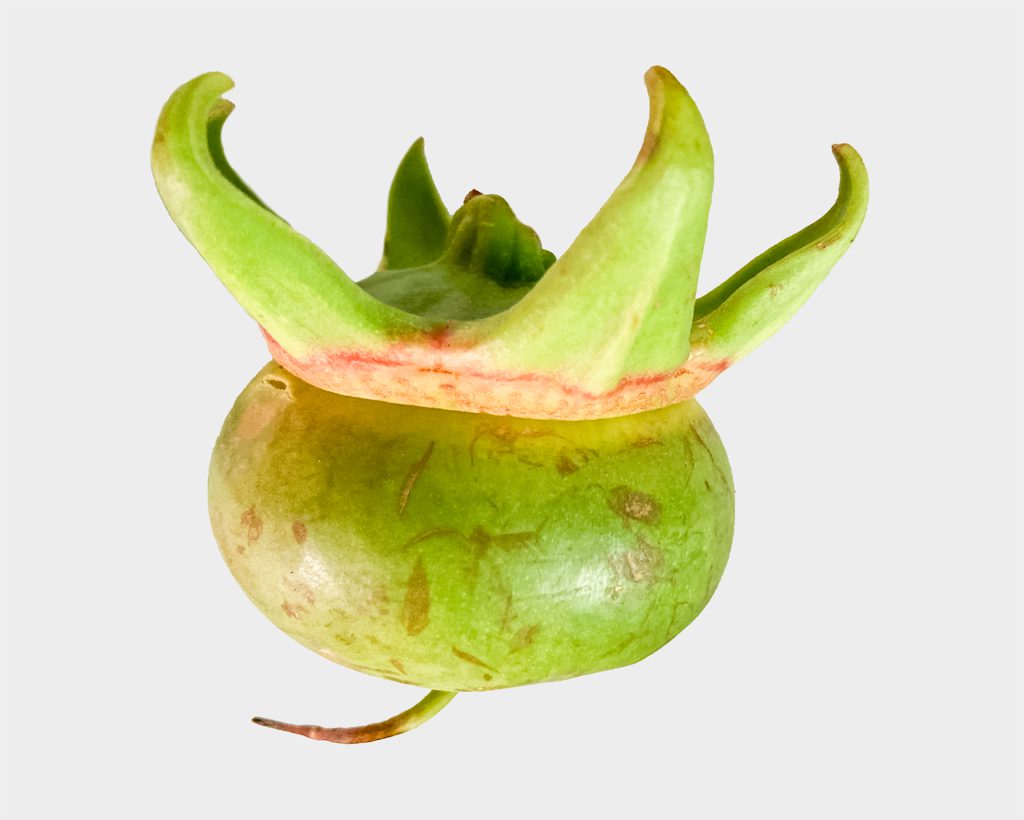

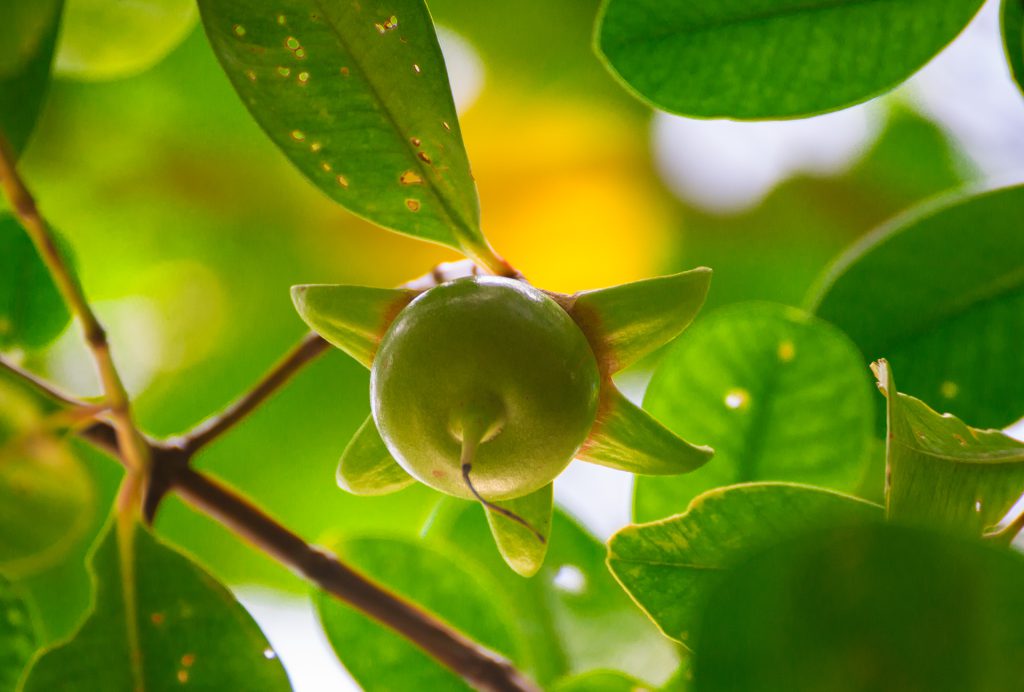
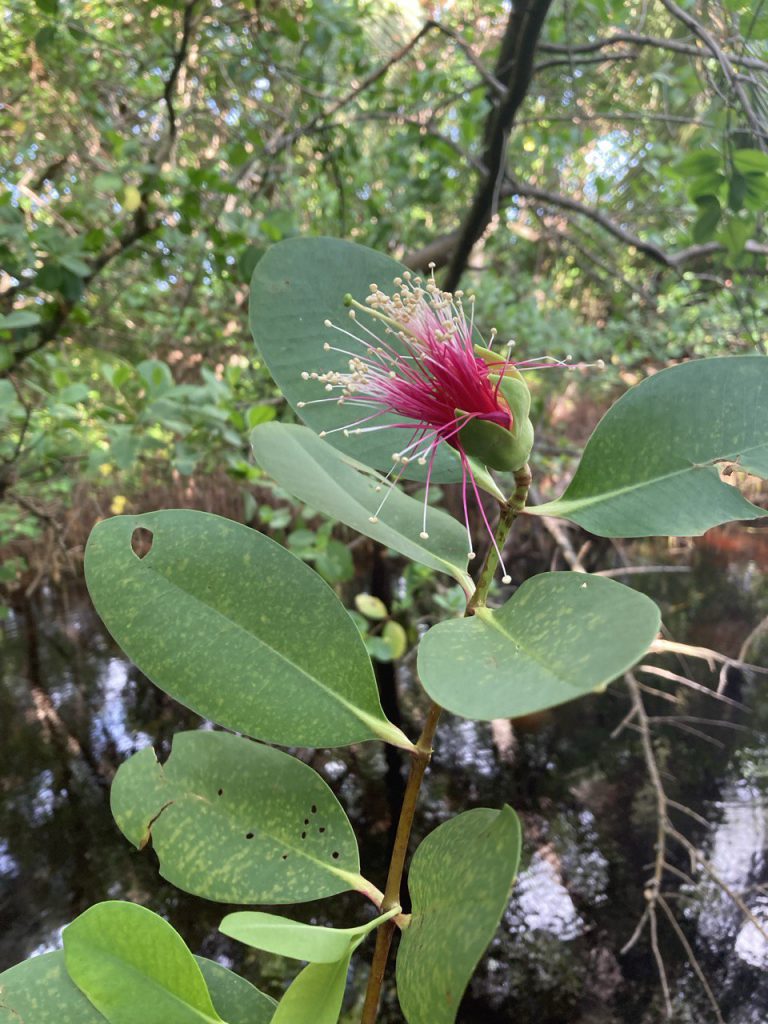
Ecological Role
Sonneratia mangroves contribute significantly to their ecosystems. As coastal plants, they stabilize the soil, prevent erosion, and create habitats for both marine and terrestrial species. In regions like Southeast Asia, where these mangroves are common, the flowers attract fireflies, creating a natural spectacle that promotes eco-tourism. In Malaysia, for example, firefly tours help educate visitors on mangrove conservation. In the Maldives, these trees enhance local biodiversity and contribute to sustainable tourism.
Nutritional and Medicinal Value
Mangrove apples are highly nutritious, particularly rich in vitamin C, which supports the immune system, and fiber, which aids in digestion. The fruit also contains vitamin A, vitamin K, calcium, and B vitamins, each contributing various health benefits. In traditional medicine practices across Southeast Asia and the Maldives, mangrove apples are used to treat coughs, soothe skin irritations, and aid digestion. They are also made into poultices to treat insect bites and bruises, with fermented forms sometimes applied to slow bleeding.
Culinary Applications in the Maldives and Other Countries
The unique flavor of the mangrove apple lends itself to various traditional and contemporary culinary uses. In the Maldives and Southeast Asia, the fruit is often enjoyed raw with salt, sugar, or coconut. Its flesh is incorporated into curries and stir-fries, served with seafood, or transformed into chutneys and jams. The tangy taste also complements ingredients like chili peppers, garlic, and lime. Additionally, mangrove apples are processed into juices, milkshakes, and syrups, or even dried and ground into a high-protein flour substitute.
We would climb kulhavah trees in our childhood, and even today, youths and teenagers in Noonu Lhohi continue to do so. We prepare juice from the fruit and make a dessert using kulhavah with added sugar, coconut, or even eat it with Maldivian fish sauce (rihaakuru) and noodle soup powder.
In our childhood, after performing the dawn prayer (Fajr), we would wait for the sky to brighten, though the morning light hadn’t fully filled the horizon yet. We’d walk towards the tall mangrove apple trees, their thick trunks and height making them stand out. As the first rays of light touched the earth, the ripe fruits would fall to the ground. We’d gather them, returning home to make fresh juice or enjoy them just as they were.
In Noonu Landhoo, creative local initiatives highlight the fruit’s versatility. Jaufar, a café owner, developed a signature mojito using Sonneratia caseolaris, which has gained popularity across the atoll, showcasing the fruit’s commercial potential.

Jaufar, presents his signature Kulhavah (Mangrove Apple) mojito drink. Photo: Yoosey.

Former Tourism Minister Dr. Mausoom and Former Heritage Minister Yumna Maumoon enjoying a Kulhavah mojito in Noonu Landhoo. Photo: Yoosey
Kulhavah Island: Landhoo’s Rich Heritage and Unique Ecosystem
Landhoo Island is an inhabited island within Southern Miladhunmadulhu Atoll (Noonu Atoll), renowned for its extensive mangrove ecosystem. The island is particularly notable for its large population of Sonneratia caseolaris (known locally as kulhavah trees), which make up the Maldives’ largest Sonneratia mangrove area. In addition to its ecological significance, Landhoo holds historical importance, featuring remnants of the Maldivian Buddhist era. Among these is an ancient mound, known locally as Maabadhige Haitha, situated on the island’s northwest side. This mound, with a diameter of 292 feet and a height of 28 feet, is believed to be the remains of a Buddhist stupa, offering a glimpse into the island’s deep cultural past.
During my childhood, I recall people from Landhoo traveling to our island, Noonu Lhohi, to sell Sonneratia (mangrove apple) fruit. This trade often took place through a barter system, where the fruit was exchanged for rice.
Conclusion
Sonneratia caseolaris is more than just a tree; it is a vital part of the Maldivian ecosystem and holds immense cultural and economic significance. Through sustainable management and community-based initiatives, the mangrove a, mangrove apples are processed into juices, milkshakes, and syrups, or even dried and ground into a flour substitute that is high in protein.


